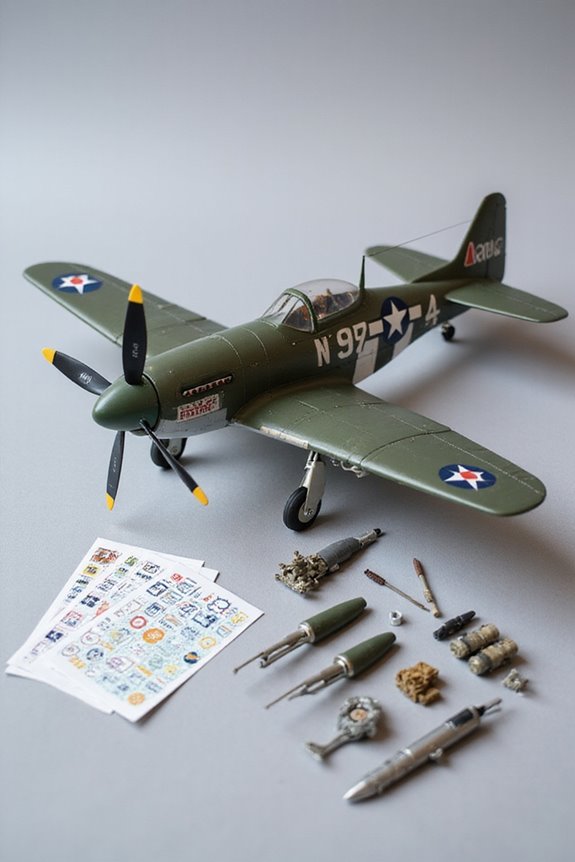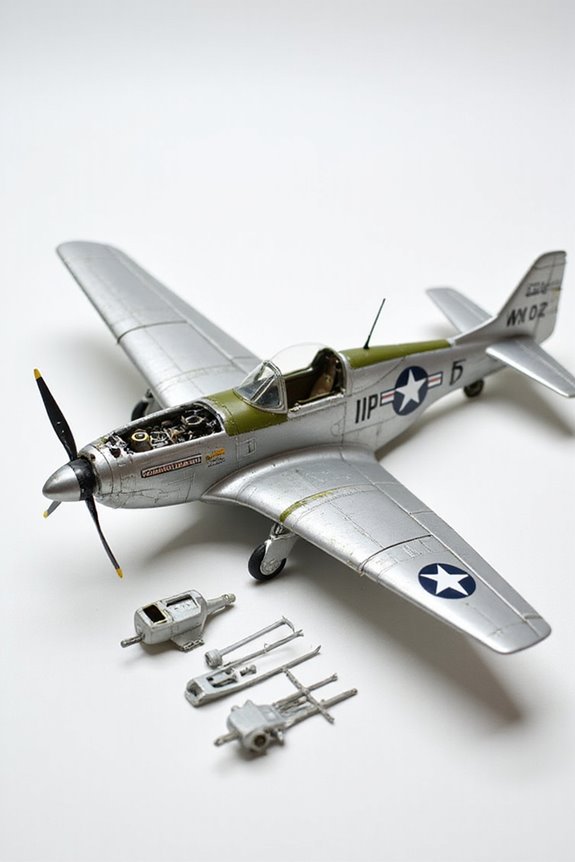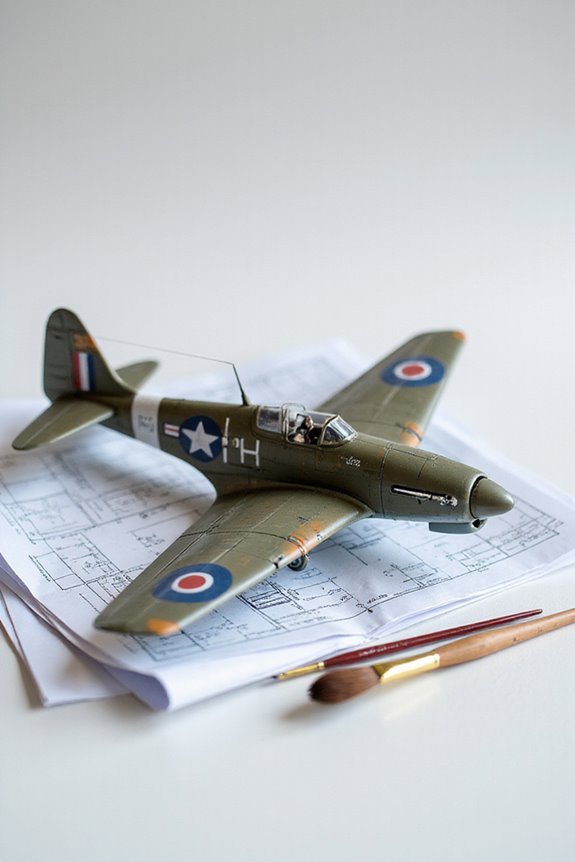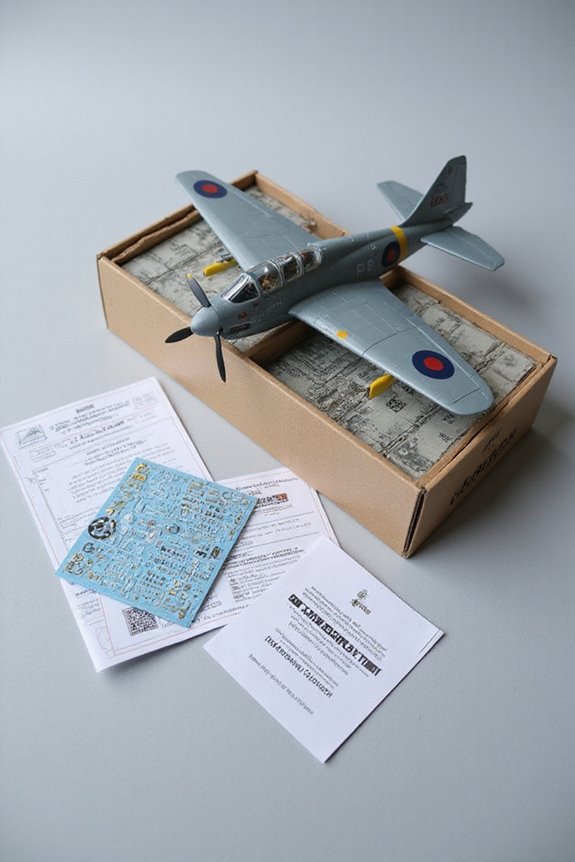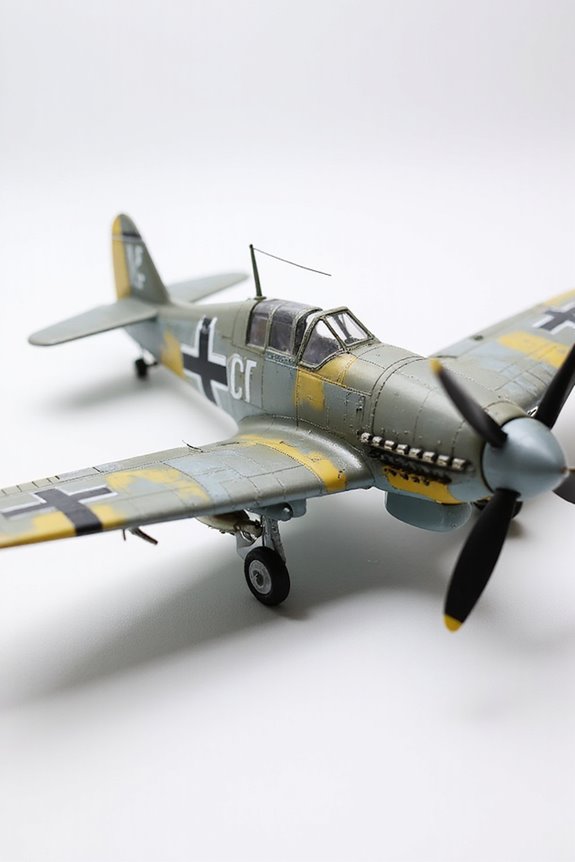When choosing a P-51 Mustang model kit, we should start by checking the manufacturer’s quality. Tamiya’s kits feature stunning details while Revell is budget-friendly but less detailed. Next, reflect on the scale. Larger scales, like 1/32, give us more detail, but they take up more space. We also need to think about historical accuracy—decals and color schemes matter! Finally, let’s match our skill level with the kit’s complexity. Join us as we explore more factors to reflect on!
Key Takeaways
- Research manufacturer quality, favoring Tamiya for detail versus Revell for budget options.
- Determine the appropriate scale, weighing larger scales for detail against smaller scales for space.
- Evaluate kit features, focusing on the accuracy of parts, decals, and assembly options to ensure historical fidelity.
- Assess the assembly complexity, choosing beginner-friendly kits or advanced models based on your skill level.
- Set a budget to narrow choices, considering the balance between cost and desired kit detail.
Assessing Manufacturer Quality
When it comes to picking the right P-51 Mustang model kit, how do we determine which manufacturers are worth our time and money? Let’s break it down. Tamiya is our go-to choice, known for their advantages like stunning detail and superior components. We’ve all heard about Revell’s drawbacks; while they’re budget-friendly, their kits can lack detail, perfect for beginners but not for the seasoned builder. Then we have Trumpeter; they have some nagging issues with incorrect wheel wells and surface details. Finally, let’s not forget Dragon, notorious for their errors and incorrect propeller pitch. In this hobby, knowing which kits to avoid can save us headaches—and more than a few bad words! So, watch out for these manufacturers!
Understanding Scale Differences
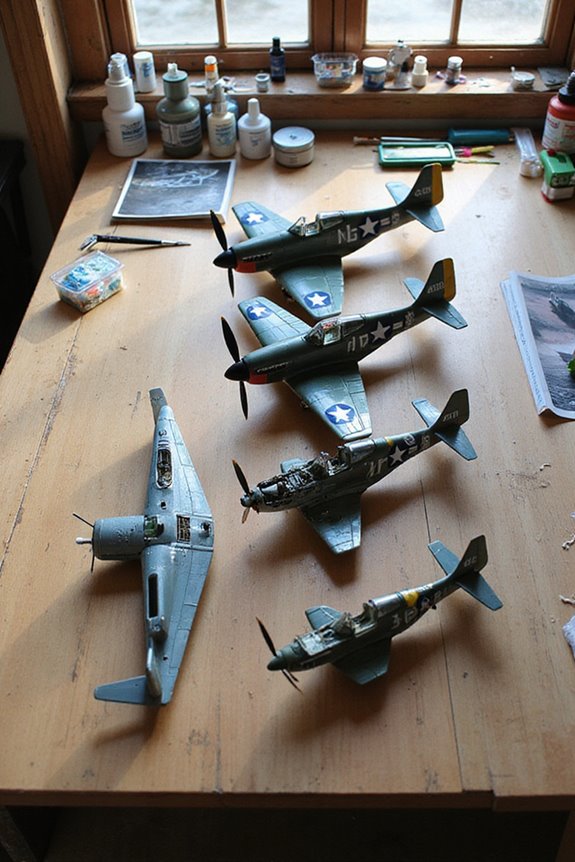
While many of us plunge into the exciting world of model kits, understanding scale differences is essential for making the right choice. We’ve got scale selections from 1/72 to 1/32, each offering unique model dimensions. Bigger scales allow for more detailed builds, perfect for us detail lovers. But watch out! Larger kits take up more space—and usually cost more too.
If you’re just starting, those tiny parts in smaller scales can feel like trying to juggle spaghetti, but they’re often more affordable. On the flip side, experienced modelers might appreciate the challenges of a large scale. Ultimately, it’s a balancing act between detail, display space, and our modeling skills. Additionally, consider how certain kits promote STEM learning through hands-on activities, which can enhance the building experience. Let’s make that choice wisely!
Evaluating Kit Features and Details
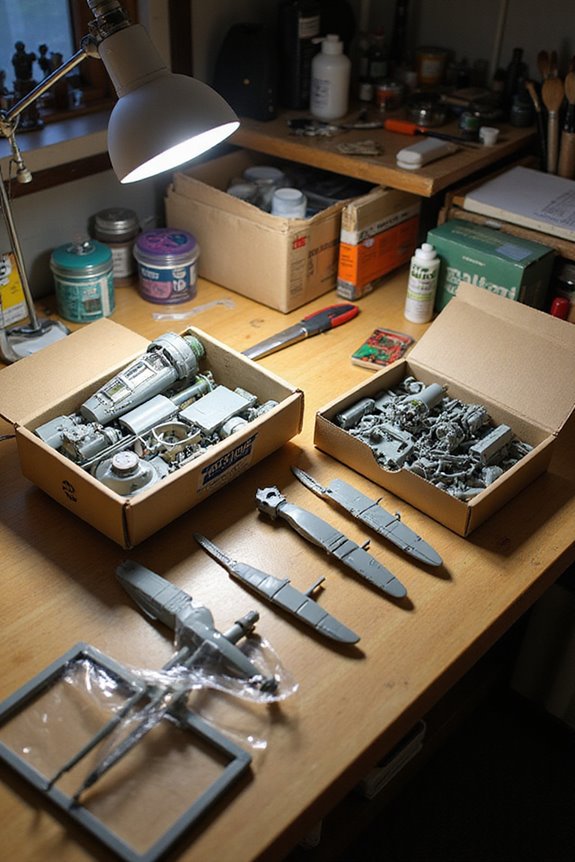
After we’ve wrapped our heads around scale differences, let’s turn our attention to what really makes a kit sing: its features and details. We need to evaluate detail accuracy, like how sharply molded parts make everything pop. For instance, some high-end kits offer beautifully detailed cockpits, making you feel like you’ve stepped into a Mustang rather than just built one.
Then there are assembly options: some kits can be built with open panels or closed. These choices can add complexity or simplicity to our builds. Remember, a smoother fit can save us headaches during assembly. So, whether we lean toward a budget kit or splurge on a premium one, let’s get something that inspires us to create our best Mustang! Additionally, consider models with high detailing that enhance the overall appearance and collectability of your build.
Ensuring Historical Accuracy
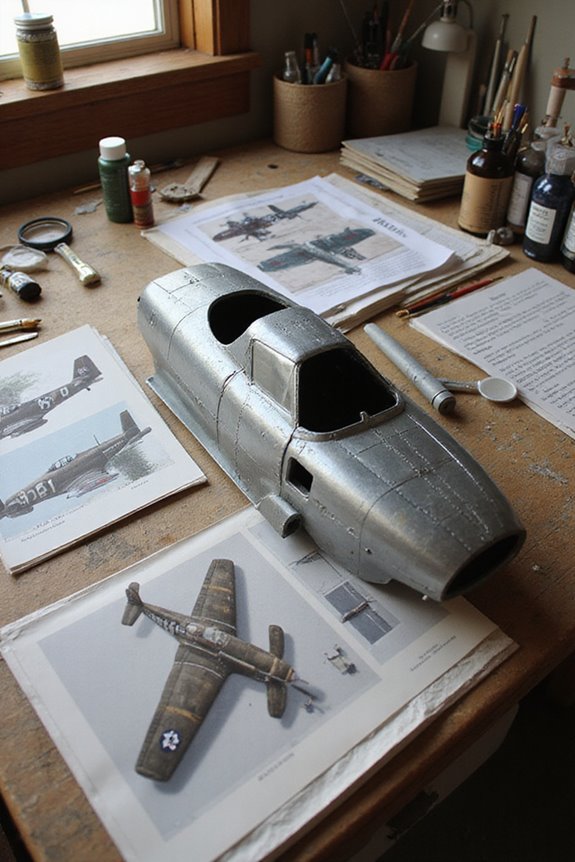
Ensuring historical accuracy in our P-51 Mustang model kits is key if we want our builds to feel authentic. To nail this down, let’s pay attention to decals quality. The right decals should have detailed markings that reflect the era and variant, like the P-51D’s suave look with its Merlin engine. We wouldn’t want our Mustang to flaunt an Allison engine like it’s still in the ’40s, right?
Researching variant differences helps us depict unique features, like canopy shapes and armament. Don’t forget color schemes! Based on historical records, we can make sure our paintwork matches the operational environment. By focusing on these details, we’re not just building models, but capturing pieces of history—minus the flying lessons!
Considering Assembly Complexity
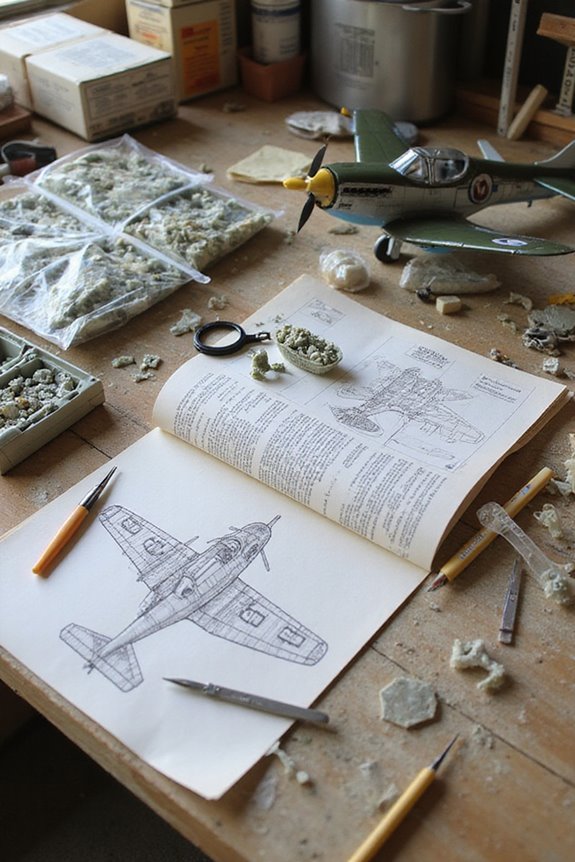
Building a P-51 Mustang model is a thrilling challenge, but before we get too carried away with paint and decals, let’s talk about assembly complexity. We have beginner kits that are perfect for novices, featuring fewer parts and simple assembly steps. They’re like training wheels for modelers!
On the other hand, advanced kits bring the real fun, with intricate details like cockpit interiors and undercarriage mechanisms. However, they do require more skill and patience. Additionally, considering the durability and crash resistance of the materials used can also influence your choice of model kit.
Budgeting and Availability Factors
When it comes to choosing a P-51 Mustang model kit, budgeting and availability are key players in our decision-making process. Kit pricing varies widely, so knowing our budget helps narrow our options. Budget kits like Revell provide basic features but lack the detail we might crave. On the flip side, premium kits from Tamiya or Eduard offer stellar detail, justifying their higher price tags.
Market trends also play a role. Popular scales of 1/32 and 1/72 tend to have more options readily available. However, rare or limited edition kits may get pricey quickly, often leaving us hunting through private sellers. Ultimately, knowing what we want, along with planning for extra paint and parts, makes our model-building adventure smoother. Additionally, considering the construction and durability aspects of model kits can influence our choices for long-lasting builds.
Frequently Asked Questions
What Tools Do I Need for Assembling a P-51 Mustang Model Kit?
When assembling our P-51 Mustang model kit, we’ll need cutting tools for precision and a variety of adhesive options to securely bond parts. It’s essential for achieving a professional finish on our project.
How Can I Paint My P-51 Mustang Model Effectively?
When we think about painting techniques, our color choices become essential. We should prime the model, use acrylics if possible, and apply thin layers for that impeccable finish—each decision shaping our masterpiece. Let’s create!
Are There Aftermarket Parts for Enhancing P-51 Models?
We’ve found numerous aftermarket upgrades for our P-51 models that really enhance model detailing. From cockpit details to resin wheels, these parts can elevate our builds and bring them to life. Let’s explore together!
Where Can I Find Reference Photos for P-51 Mustang Models?
Where can we find exceptional reference photos for our P-51 Mustang models? Let’s explore online forums and reference books that offer detailed imagery, bringing authenticity and accuracy to our modeling projects together!
How Do I Prevent Damage During Model Assembly and Painting?
To prevent damage during assembly, we should employ careful assembly techniques, like using the right tools and checking parts beforehand. A clean workspace helps us avoid losing small components and guarantees a smoother painting process too.

